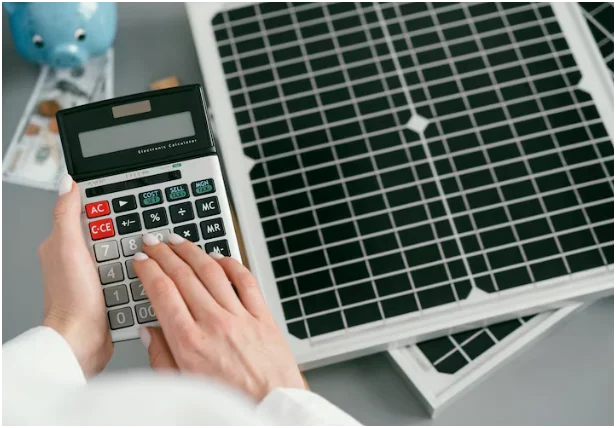The growing concern about climate change has made renewable energy a topic of everyday discussion, with solar power often at the center of it. People frequently talk about cost savings, energy independence, and reduced reliance on fossil fuels, but one equally important factor is the environmental payback. Specifically, how long does it take for a solar system to “pay back” the carbon emissions created during its manufacturing, installation, and maintenance? This concept is known as carbon payback time. It measures the period required for a solar system to offset the emissions tied to its production with the clean energy it generates. We will explore this concept in detail, demonstrating why understanding carbon payback is crucial in evaluating solar as a long-term sustainable energy option.
Factors Influencing Carbon Payback Time
Manufacturing Process and Energy Inputs
Every solar panel begins its journey in a factory, and this process requires energy. From mining the raw materials, such as quartz and metals, to refining, shaping, and assembling them into functional solar modules, the energy demand is considerable. Most of this energy is still generated from fossil fuel sources globally, which means the production process itself carries a carbon footprint. Silicon-based panels, which are the most common, require energy-intensive purification steps, adding significantly to the upfront carbon cost. Companies like North Valley Solar Power emphasize the importance of considering these initial emissions when evaluating the long-term sustainability of solar systems, since understanding the manufacturing footprint helps highlight the value of clean energy payback over time.
However, as manufacturing technologies improve, factories are increasingly adopting cleaner processes and using renewable energy in production. This initial footprint is crucial in determining how long it will take a solar system to offset its environmental impact.
Efficiency of Solar Panels
The efficiency of solar panels plays a direct role in the carbon payback calculation. High-efficiency panels generate more electricity from the same amount of sunlight, which means they offset their manufacturing emissions faster. For example, a panel with 20% efficiency will produce significantly more clean energy in its lifespan compared to a panel with 15% efficiency, even if both require similar resources and energy to manufacture. This difference directly shortens the carbon payback time.
As technology continues to improve, average solar panel efficiency is rising, with some reaching beyond 22% in residential applications. For homeowners or businesses considering solar, understanding efficiency is more than just about electricity savings—it is also about how quickly the system starts contributing positively to the environment after offsetting its creation footprint.
Geographic Location and Sunlight Availability
Where a solar system is installed makes a major difference in carbon payback time. Regions with abundant sunlight, such as California, Arizona, or Nevada, allow solar panels to generate a higher amount of electricity over the course of a year compared to areas with frequent cloud cover or shorter daylight hours. The more energy a system produces, the faster it can offset its initial carbon emissions.
For example, in a place like Davis, California, with abundant sunshine, panels may achieve carbon payback within two to three years, while in cloudier northern regions, it might take four to five years. This highlights the importance of location-specific studies on solar payback in planning installations. The environmental return on investment is closely tied to natural sunlight exposure, and this variable cannot be overlooked when evaluating the long-term impact of solar energy.
System Lifespan and Durability
A solar system’s lifespan plays an equally important role in determining the full environmental return. Most modern solar panels are designed to last 25 to 30 years, and many continue to produce power even beyond that period, albeit at reduced efficiency. If the carbon payback time is around two to four years, depending on conditions, this means the panels will provide decades of virtually carbon-free electricity afterward. Durability factors, including the quality of installation, resistance to weather conditions, and adherence to manufacturer standards, ensure that panels maintain their performance throughout their lifetime. The longer a solar system operates efficiently, the greater its overall positive contribution to reducing carbon emissions. Therefore, evaluating solar energy through the lens of not just payback time but also long-term durability makes its sustainability benefits even clearer.
Advancements in Recycling and End-of-Life Management
Another critical yet often overlooked factor in carbon payback is what happens when solar panels reach the end of their functional life. Recycling programs for solar panels are gaining importance, aiming to recover valuable materials such as silicon, silver, and aluminum while minimizing waste. By reintroducing these materials into the supply chain, the energy required for new panel production is significantly reduced. This not only lowers the carbon footprint of future systems but also improves the overall environmental sustainability of the solar industry.
The concept of carbon payback time is a vital lens through which to evaluate the sustainability of solar power. While manufacturing, transportation, and installation carry an initial carbon cost, solar systems quickly offset these emissions thanks to their clean energy production. Factors such as panel efficiency, geographic location, durability, and recycling all shape how quickly payback is achieved. In most cases, solar panels typically balance out their carbon footprint within just a few years and then provide decades of near-zero-emission electricity. Solar’s ability to deliver a clear return in both areas makes it a powerful tool in reducing global greenhouse gas emissions.

